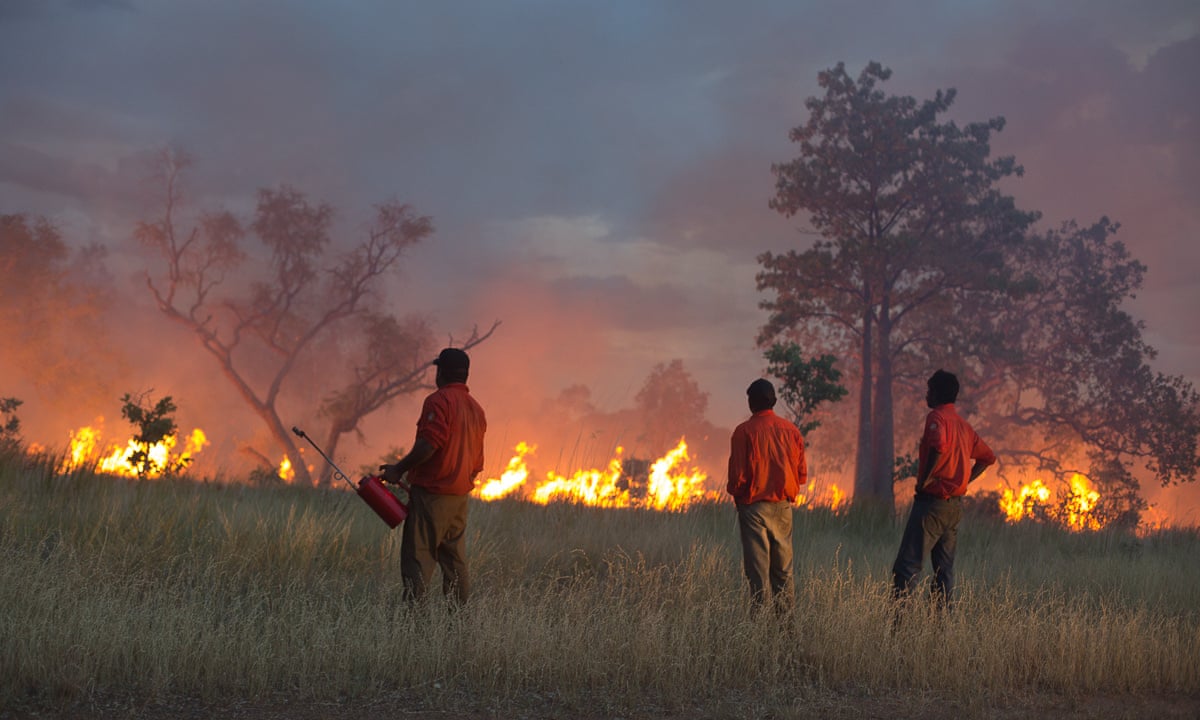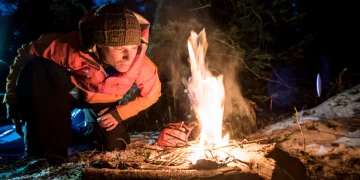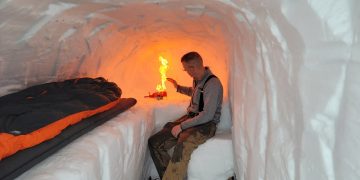Building a fire is an essential skill for anyone venturing into the wilderness. Whether you’re an avid camper, a survivalist, or someone who simply enjoys outdoor adventures, knowing how to start and maintain a fire with minimal resources can be a lifesaver. But beyond the immediate utility of a fire—providing warmth, cooking food, and warding off predators—there’s a growing emphasis on sustainability. This article explores how you can build a fire that is not only efficient but also environmentally responsible. We’ll cover fire-building techniques, materials, and strategies for minimizing your impact on the surrounding environment.
1. Understanding the Basics of Fire
Before diving into the specifics of sustainable fire-building, it’s essential to understand how fire works. A fire needs three critical elements to sustain itself: heat, fuel, and oxygen. These are often referred to as the fire triangle. If any of these elements is missing, the fire cannot continue.
- Heat is supplied by the ignition source, whether it’s a match, a lighter, or friction.
- Fuel is the material that burns. This can range from dry wood and leaves to man-made materials like paper.
- Oxygen is the element that supports combustion. Without adequate airflow, a fire will suffocate.
With this in mind, the goal of a sustainable fire is to ensure that you are not consuming resources unnecessarily or causing harm to the environment.
2. Choosing the Right Location
When you’re working with minimal resources, the location of your fire is key to making it sustainable. Ideally, you want to build your fire in a place that:
- Minimizes damage to the surrounding area.
- Reduces the risk of forest fires or spreading fire to nearby vegetation.
- Is safe and convenient for you to monitor the fire.
Key Considerations:
- Avoid fire-sensitive zones: Stay away from dry, grassy areas or places with overhanging branches.
- Use an existing fire pit: If one is available, use it to prevent disturbing the ecosystem.
- Clear a small area: If you need to create a new space, clear away dead leaves, branches, and grass. Use rocks to build a fire ring to contain the flames.
By choosing the right location, you minimize your impact on the surrounding environment and help ensure your fire stays manageable.

3. Selecting the Right Fuel
In a traditional survival setting, finding the right fuel is one of the biggest challenges. You want to be as resourceful as possible while avoiding unnecessary waste. The goal is to use what’s readily available and not over-harvest local resources.
The Three Stages of Fuel:
- Tinder: The smallest, driest material that ignites easily. Common tinder includes dry leaves, bark, grass, and twigs.
- Kindling: Small sticks or branches that are slightly larger than tinder. They help the fire grow from its initial spark into a sustained flame.
- Firewood: Larger logs or branches that will keep the fire going for an extended period.
When gathering fuel, consider these tips:
- Use dead, dry materials: Wet or green wood won’t burn easily and will generate a lot of smoke.
- Do not over-harvest: Take only what you need and avoid depleting the area. The local ecosystem will thank you.
- Use small, manageable pieces: Especially for the first two stages of the fire. Larger pieces should only be added once the fire is fully established.
Natural Materials for Sustainable Fires:
- Pinecones and resin: Pinecones, especially those from certain species of pines, contain resin that burns well. You can use them as an alternative to more conventional wood.
- Dried moss: A natural fire starter, moss is lightweight and easy to collect.
- Birch bark: It’s highly flammable and works well as both tinder and kindling.
If you’re in a region with limited firewood, you can use deadfall—branches and logs that have naturally fallen to the ground. These materials often contain less moisture than freshly cut wood and are much easier to ignite.
4. Efficient Fire-Building Techniques
The way you build your fire can affect its sustainability. A well-constructed fire can burn efficiently, with minimal fuel, and produce less smoke.
The Teepee Structure:
This is a popular and efficient method. Arrange small pieces of tinder in the center of your fire pit. Then, lean kindling sticks around the tinder, creating a teepee shape. Leave enough gaps between the sticks to allow airflow. Once the kindling is burning, add progressively larger pieces of wood to maintain the fire.
The Log Cabin Structure:
Another great method for building a sustainable fire, the log cabin structure involves placing larger logs in a square shape, leaving a hollow center where you place your tinder and kindling. This creates a steady, even burn. The log cabin design also allows you to add firewood gradually, which helps prevent over-harvesting.
The Dakota Fire Hole:
For those in areas with strong winds or where controlling smoke is critical, the Dakota fire hole is a fantastic option. It involves digging two holes—a smaller one for the fire and a larger one to provide airflow. This structure traps heat and creates a very efficient burn, using less fuel than traditional above-ground fires.
The Swedish Torch:
If you’re in an environment with limited dry material, consider the Swedish torch. This technique involves taking a log and cutting it vertically into quarters (but leaving the base intact). Place it on the ground, light the inside with tinder, and the fire will burn vertically from the center out. This method maximizes fuel use and creates a contained fire.
5. Sustainable Fire Practices
While the act of building a fire is important, how you manage it throughout its life cycle also plays a significant role in sustainability. Here are a few principles to follow for an environmentally friendly fire:

1. Use Minimal Fuel:
Once your fire is going, avoid overloading it with wood. Large, roaring fires are wasteful and consume a lot of fuel. Instead, aim for a controlled, moderate flame that will last longer and use less wood.
2. Avoid Burning Non-Natural Materials:
Never burn plastics, rubber, or any materials that produce toxic fumes. These items not only harm the environment but also pose a serious health risk. Stick to natural materials, and always leave no trace.
3. Extinguish the Fire Properly:
When you’re done with your fire, make sure it’s fully extinguished. Douse the flames with water and stir the ashes to ensure no embers remain. You don’t want to leave a smoldering fire that could reignite in dry conditions. Always check that the fire is completely out before leaving.
4. Leave No Trace:
After your fire has burned out, ensure that the site is left as you found it—or better. If you built a fire pit, ensure it is properly closed off and that no visible trace of the fire remains. Use rocks and dirt to bury any leftover wood ash. Leave the natural habitat untouched to preserve the landscape for future visitors.
6. Eco-Friendly Firestarters
If you’re looking to make your own fire starters with minimal resources, here are some sustainable options:
1. Cotton Balls and Petroleum Jelly:
Cotton balls dipped in petroleum jelly make excellent fire starters. They burn for a long time and are easy to pack. However, keep in mind that while they’re an effective tool for starting a fire, they do rely on a synthetic product.
2. Homemade Pine Cone Fire Starters:
Collect pine cones, dip them in wax (a byproduct from candles or bee hives), and allow them to cool. These natural fire starters burn hot and steady and are biodegradable.
3. Cardboard and Beeswax:
Shredded cardboard can be packed into small bundles, and beeswax can be melted and drizzled over it to create a long-lasting fire starter. This option is eco-friendly and easy to make at home.
7. Safety Considerations
Even with a sustainable fire, safety is paramount. Always follow basic fire safety rules:
- Never leave a fire unattended.
- Keep water or a fire extinguisher nearby in case the fire gets out of control.
- Choose the right fire for the right environment—some areas prohibit open flames during certain seasons due to fire hazards.
8. Conclusion
Building a sustainable fire with minimal resources requires a balance of skill, creativity, and respect for the environment. From selecting the right location to using natural fuels and fire-starting techniques, there are many ways to ensure that your fire leaves little to no impact on the ecosystem. With practice, you can master this essential skill while preserving the environment for future adventurers.























